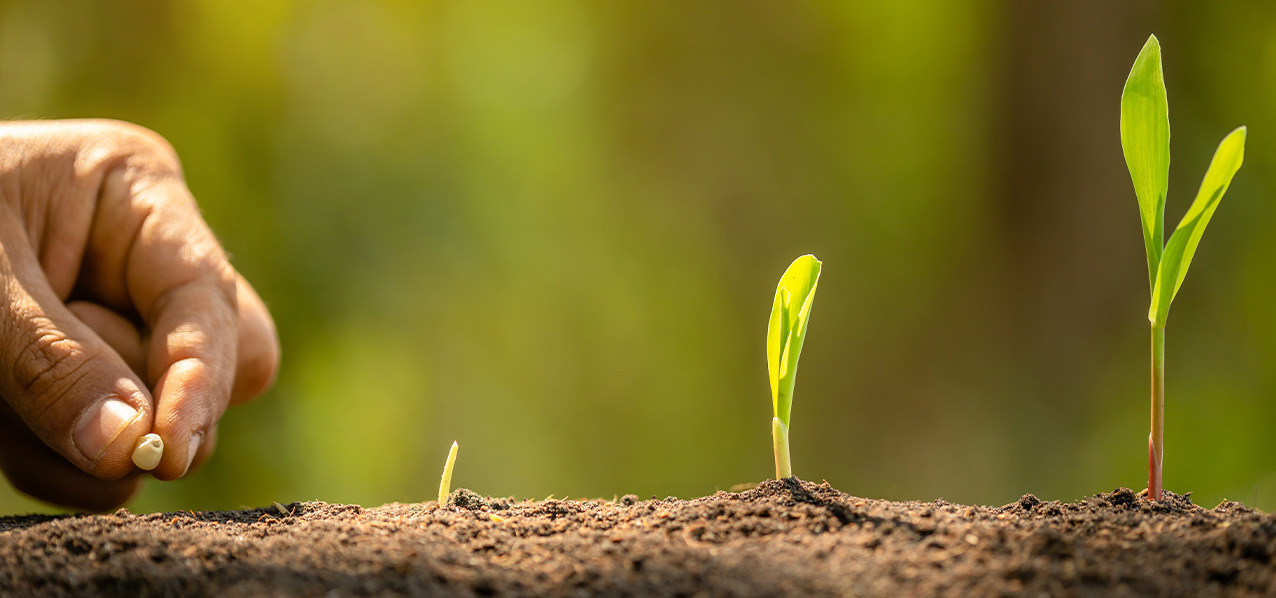Potting soils containing organic fertilisers
Compost and other mixes are more and more attractive to consumers
Producing shoots several metres long in some cases, lush foliage and an abundance of bright flowers – for weeks and months on end, ornamental and tub plants stage a performance that is no less than terrific. Where in the world do geraniums, petunias, oleander and all the others source their energy for impressive growth like that? Ideally, it’s directly from the potting soil.
Natural fertilisers with extra benefits
Many products, especially the growing number of peat-reduced and peat-free potting soils, contain organics of animal and/or plant origin, such as horn shavings, horn meal, or grain meal (a by-product of maize processing). Added constituents such as compost or bark humus also come with nutrients, feeding the plants not only for a short term, but over a period of many months.
RAL Quality Assurance for consistent quality
Since organics are natural products, their nutrients may vary naturally. Gütegemeinschaft Substrate für Pflanzen e.V. recommends using potting soils carrying the RAL quality mark. RAL-certified soils are only permitted minimal deviations in nutrient contents from the standard. They must be free of weed seeds and plant-damaging substances and also have a structure that encourages plant growth. Good to know: as a general rule, do not store potting soils for any prolonged period of time, as nutrient contents may change over time.
Hands-on expert tips
When opening a bag of potting mix for the first time, you may notice a strong smell. The smell is not indicative of poor quality, but shows that microorganisms have started to convert the organic fertiliser and make its nutrients available to the plants. Just loosen the potting soil slightly and leave it to stand in the open air for two or three days. The smell will disappear without any new smell developing. It is also quite natural for fungi to grow on organic matters. For this reason, any leftovers of your potting mix are best kept in a cool and dry place. Finally, as with any other potting soil, you should adhere to the requirements and recommendations for use shown on the packaging and keep an eye on your plants. If you notice symptoms of nutrient deficiency, a fertilizer application is what the plants need.
Potting soils containing organic fertilisers
Compost and other mixes are more and more attractive to consumers
Producing shoots several metres long in some cases, lush foliage and an abundance of bright flowers – for weeks and months on end, ornamental and tub plants stage a performance that is no less than terrific. Where in the world do geraniums, petunias, oleander and all the others source their energy for impressive growth like that? Ideally, it’s directly from the potting soil.
Natural fertilisers with extra benefits
Many products, especially the growing number of peat-reduced and peat-free potting soils, contain organics of animal and/or plant origin, such as horn shavings, horn meal, or grain meal (a by-product of maize processing). Added constituents such as compost or bark humus also come with nutrients, feeding the plants not only for a short term, but over a period of many months.
RAL Quality Assurance for consistent quality
Since organics are natural products, their nutrients may vary naturally. Gütegemeinschaft Substrate für Pflanzen e.V. recommends using potting soils carrying the RAL quality mark. RAL-certified soils are only permitted minimal deviations in nutrient contents from the standard. They must be free of weed seeds and plant-damaging substances and also have a structure that encourages plant growth. Good to know: as a general rule, do not store potting soils for any prolonged period of time, as nutrient contents may change over time.
Hands-on expert tips
When opening a bag of potting mix for the first time, you may notice a strong smell. The smell is not indicative of poor quality, but shows that microorganisms have started to convert the organic fertiliser and make its nutrients available to the plants. Just loosen the potting soil slightly and leave it to stand in the open air for two or three days. The smell will disappear without any new smell developing. It is also quite natural for fungi to grow on organic matters. For this reason, any leftovers of your potting mix are best kept in a cool and dry place. Finally, as with any other potting soil, you should adhere to the requirements and recommendations for use shown on the packaging and keep an eye on your plants. If you notice symptoms of nutrient deficiency, a fertilizer application is what the plants need.



